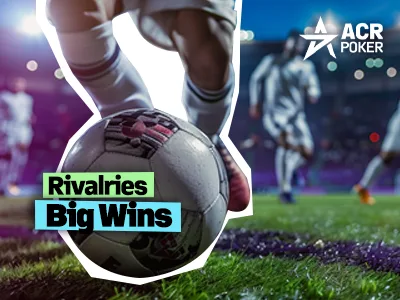How rivalry intensity shapes the Underdog Advantage in MLS
Rivalry matches in Major League Soccer are unlike regular fixtures. These games often carry additional emotional weight, with players and supporters treating them as more than standard contests. In this environment, the Underdog Advantage becomes more pronounced because form, standings, and statistical differences can diminish under rivalry pressure.
Why historical rivalries shift performance expectations
Historic rivalries can level the playing field between mismatched opponents. Even when one club dominates the league table, the underdog frequently performs above its average in rivalry settings. The Underdog Advantage is often tied to psychological factors, such as the heightened motivation to outperform a local rival, regardless of prior results.
The role of fan atmosphere in driving the Underdog Advantage
Supporter culture in MLS plays a vital role in rivalry outcomes. Packed stadiums, intense chants, and derby-day energy can energize underdog squads. Home underdogs especially benefit when the atmosphere creates momentum that disrupts visiting favorites. In such conditions, bookmakers may underestimate the influence of the fan factor.
Statistical indicators that highlight the Underdog Advantage
Numbers often reveal when an underdog has a realistic chance of upsetting a rival. By tracking key performance data, bettors can identify where the Underdog Advantage is more likely to appear. Several metrics stand out as particularly useful in MLS rivalry contexts.
Key data points to consider before wagering
-
Head-to-head history: Past rivalry results often show underdogs performing better than expected compared to non-rivalry fixtures.
-
Expected goals (xG) differentials: Teams that create chances but fail to finish in regular matches may break through in high-intensity rivalries.
-
Disciplinary trends: Rivalries typically produce more fouls and cards, conditions that can favor physical underdog squads.
-
Travel and rest differences: Short turnaround times or long-distance travel for favorites can amplify the Underdog Advantage.
Situational contexts that reinforce the Underdog Advantage
Beyond metrics, situational conditions often amplify the power of the underdog. Rivalries introduce unique circumstances where preparation, momentum, and pressure intersect to elevate teams that might otherwise be dismissed as unlikely winners.
Momentum and recent form shifts
Momentum often overrides season-long trends. An underdog entering a rivalry clash after consecutive wins can gain confidence that translates into competitive performance. Even modest form improvements may be enough to tilt balance in rivalry matches, increasing the Underdog Advantage.
Coaching tactics and rivalry-specific preparation
Managers frequently adjust tactics for rivalry encounters. Defensive setups, counterattacking plans, or squad rotations can surprise favorites and create unexpected advantages. Tactical changes focused specifically on rivalry dynamics enhance the Underdog Advantage.
Market dynamics in betting on the Underdog Advantage
Betting markets often misprice rivalry matches because of public sentiment and emotional betting. Understanding how markets behave allows bettors to recognize when underdogs are undervalued.
How line movement reflects rivalry biases
-
Public favoritism: Popular clubs often attract heavy betting volume, which can inflate odds on the underdog.
-
Sharp money trends: Professional bettors may target the Underdog Advantage early, causing subtle line shifts before public action.
Live-game betting strategies that emphasize the Underdog Advantage
Rivalry matches are highly dynamic, making them ideal for in-play betting strategies. Observing momentum shifts and tactical changes in real time can highlight when the underdog’s chances improve significantly.
In-game signs of an emerging Underdog Advantage
-
Strong pressing sequences: Sustained possession or aggressive pressing by the underdog signals growing influence in the match.
-
Favoring set pieces: Rivalries often feature fouls that lead to dangerous free kicks or corners, benefiting underdogs with aerial strength.
-
Opponent fatigue: If the favorite shows declining intensity late in the match, the Underdog Advantage may become more pronounced in live betting markets.
Risk management and responsible betting on the Underdog Advantage
Because underdogs lose more frequently by definition, risk management is essential. A measured approach helps bettors take advantage of favorable rivalry conditions while limiting downside.
Principles for managing underdog bets
-
Controlled unit sizing: Allocate only a small percentage of bankroll to each rivalry underdog wager.
-
Evidence-based wagering: Bet only when statistical or situational indicators align with rivalry conditions that create an Underdog Advantage.
-
Outcome tracking: Record all rivalry wagers, noting the reasoning and results to refine strategies over time.
Example indicators table
| Indicator | Why it supports the Underdog Advantage |
| Underdog unbeaten in last three rivalry meetings | Suggests historical matchup strength and increased upset potential |
| Favorite entering match after midweek travel | Fatigue can undermine the favorite, strengthening the underdog’s edge |
Concluding analysis of the Underdog Advantage in MLS rivalries
The Underdog Advantage in MLS rivalry matches stems from emotion, fan influence, situational context, and tactical adaptation. By combining statistical indicators with awareness of rivalry-specific conditions, bettors can better identify when underdogs hold genuine value. Disciplined bankroll management ensures that long-term strategies remain sustainable while capitalizing on unique rivalry dynamics.

